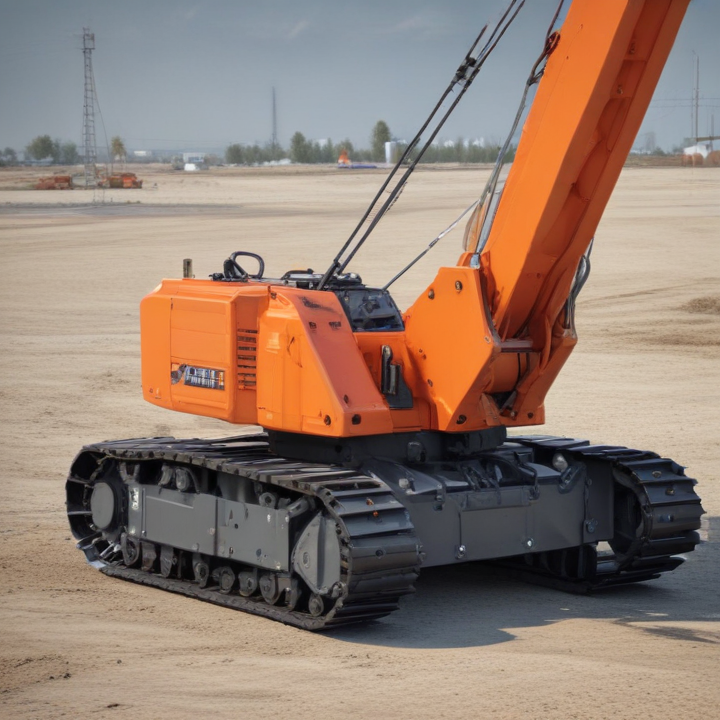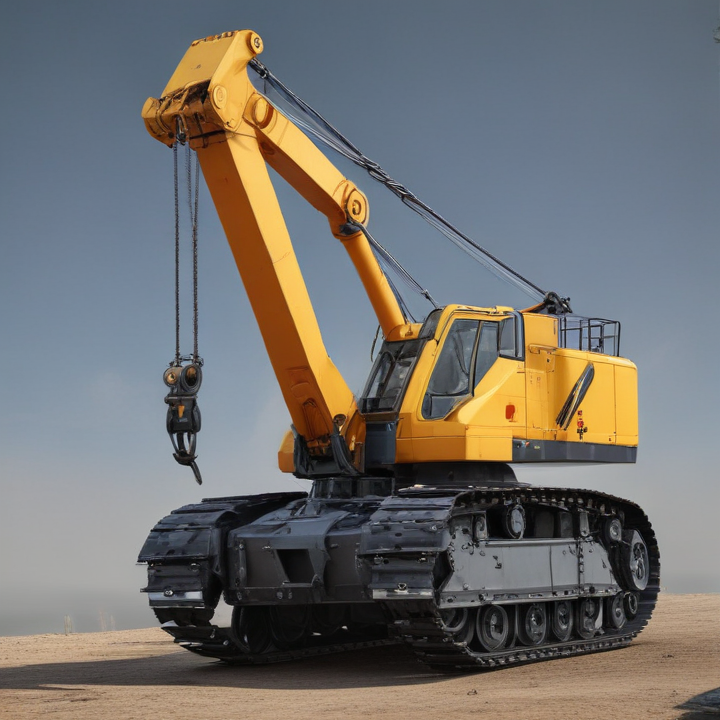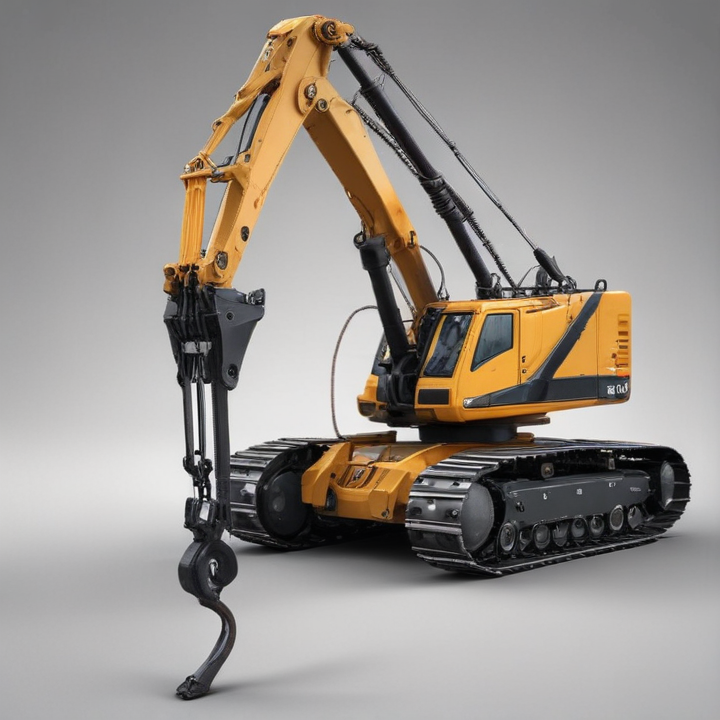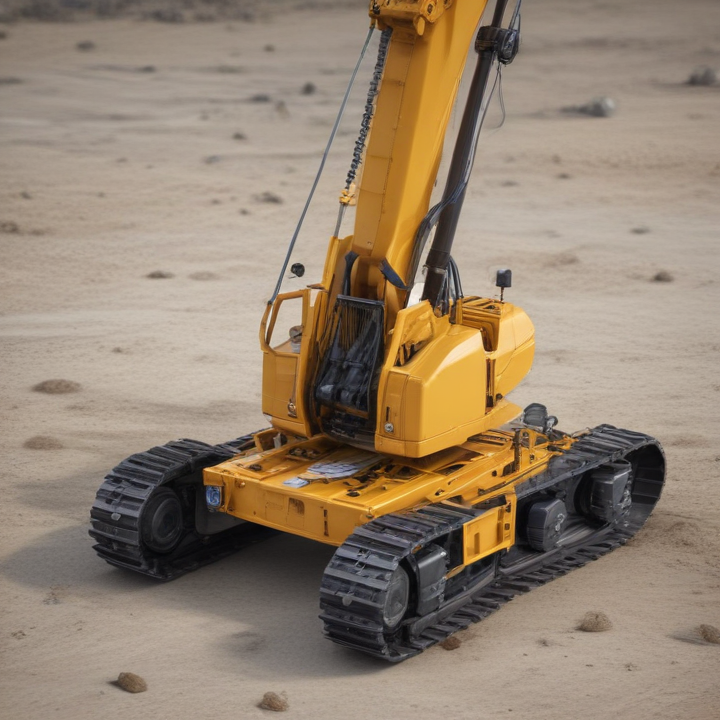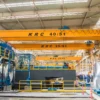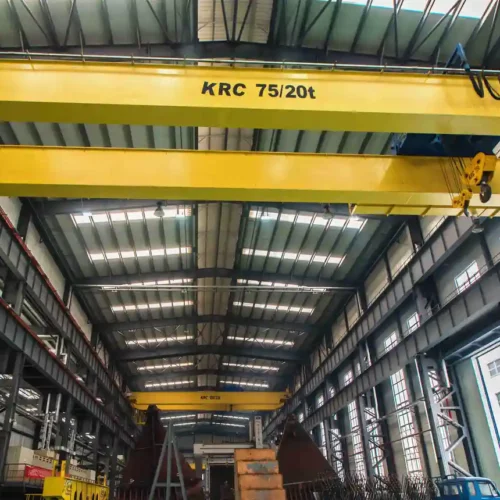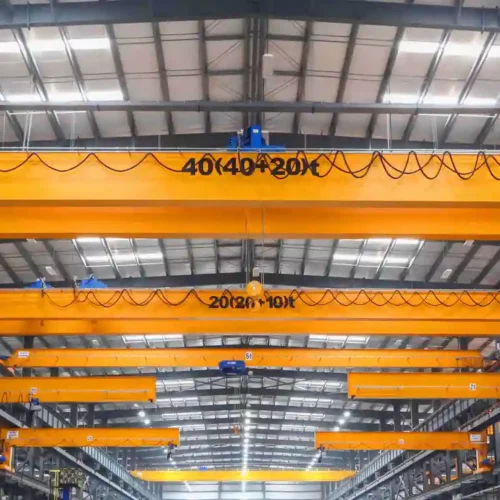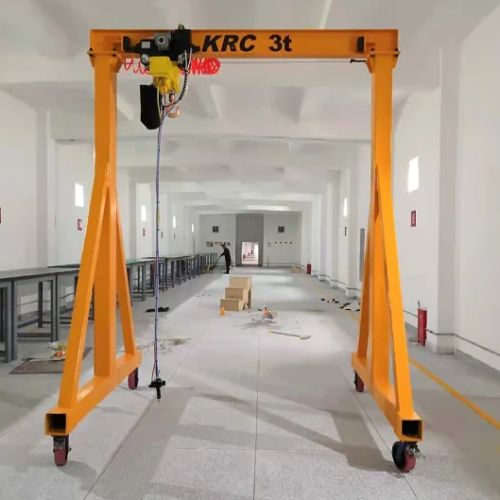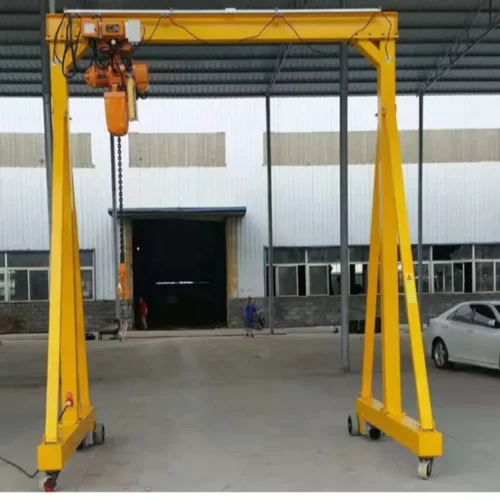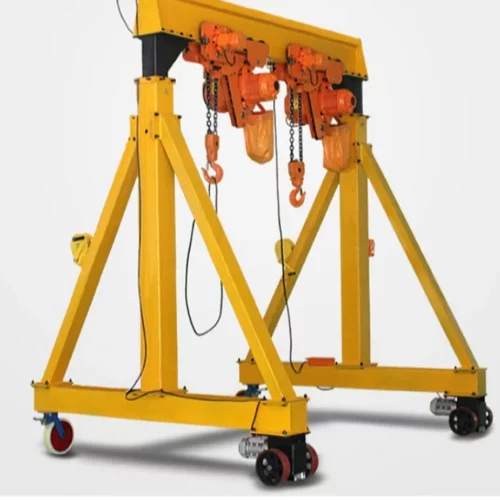mini crawler crane Safety Certifications
Mini crawler cranes, like all construction equipment, must adhere to stringent safety standards and certifications to ensure the wellbeing of operators and bystanders. These certifications vary based on geographic and regulatory jurisdictions, but some of the prominent ones include:
1. CE Marking (European Conformity): Essential for machines operating within the European Economic Area, it signifies that the crane meets EU health, safety, and environmental protection directives.
2. ISO 9001: Although not specific to safety alone, this quality management certification ensures that the manufacturing process meets international standards, indirectly supporting safety through quality assurance.
3. ANSI/ASME (American National Standards Institute/American Society of Mechanical Engineers): In the U.S., these standards are crucial. Specifically, ASME B30.5 sets the safety standards for mobile and locomotive cranes.
4. OSHA (Occupational Safety and Health Administration): OSHA regulations in the U.S. ensure workplace safety by setting forth requirements for crane operation, maintenance, and operator training.
5. Lifting Operations and Lifting Equipment Regulations (LOLER) 1998: In the UK, LOLER governs the safe use of lifting equipment, requiring thorough examinations and inspections.
6. CSA Z150: In Canada, this standard sets the safety requirements for mobile cranes, including mini crawler cranes.
7. JIS (Japanese Industrial Standards): In Japan, these standards ensure that cranes comply with national safety and operational requirements.
Manufacturers may also receive third-party certifications from recognized bodies like TÜV or DNV GL, which provide additional validation of a crane’s safety and reliability.
Operator training and certification programs, such as those provided by NCCCO (National Commission for the Certification of Crane Operators) in the U.S., further bolster safety by ensuring operators are knowledgeable and competent.
Adherence to these standards and certifications not only ensures regulatory compliance but significantly mitigates risks associated with crane operations through rigorous testing, regular inspections, and comprehensive safety protocols.
List Reference Technical Parameters of “mini crawler crane”
Mini crawler cranes are compact yet powerful lifting machines, designed for use in confined spaces where larger cranes cannot operate. Here are the key technical parameters:
1. Lifting Capacity: The maximum weight a mini crawler crane can safely lift, typically ranging from 1 to 10 tons.
2. Working Radius: The maximum horizontal distance from the center of the crane’s rotation to the load, generally between 5 to 20 meters.
3. Maximum Lifting Height: The highest point the crane boom can extend to lift a load, usually from 5 to 25 meters.
4. Boom Length: The length of the crane’s primary lifting boom, which can be telescopic (extendable) or fixed, typically between 5 and 15 meters.
5. Dimensions: The overall size of the crane, including length, width, and height, which influences its ability to navigate tight spaces. Typical dimensions are roughly 2 to 6 meters in length, 0.6 to 2 meters in width, and 1 to 2.5 meters in height.
6. Weight: The operational weight of the crane, which affects ground bearing pressure and transportability, generally between 1,000 to 10,000 kilograms.
7. Outrigger Span: The extension distance of stabilizing outriggers, which provide additional stability during lifting operations. The typical span ranges from 2 to 6 meters.
8. Engine Type and Power: Mini crawler cranes are equipped with either diesel, electric, or dual power engines, offering power outputs from 10 to 50 horsepower.
9. Travel Speed: The maximum speed at which the crane can move, usually between 1 and 3 kilometers per hour.
10. Gradeability: The maximum slope the crane can safely navigate, often between 10 to 25 degrees.
11. Control System: Modern mini crawler cranes are equipped with advanced control systems, such as wireless remote control and load management systems for enhanced safety and precision.
These technical parameters provide a comprehensive overview of the capabilities and limitations of mini crawler cranes, making them suitable for a variety of industrial, construction, and maintenance applications in restricted environments.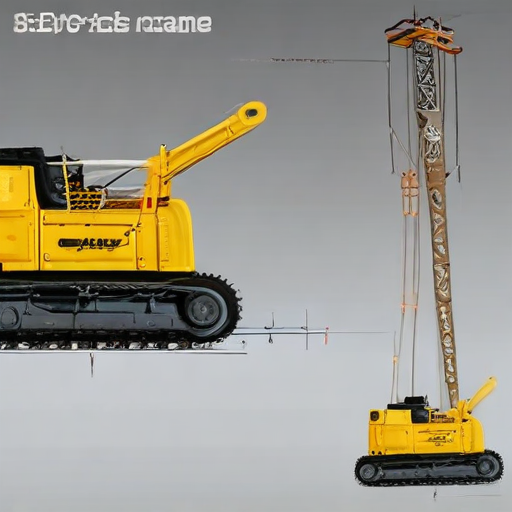
List Product features of “mini crawler crane”
A mini crawler crane is a compact yet robust piece of equipment designed to perform lifting tasks in confined or hard-to-reach spaces. Here are some key features of a mini crawler crane:
1. Compact Size: Mini crawler cranes have a small footprint, making them ideal for working in tight or restricted areas where larger cranes can’t access.
2. High Maneuverability: Equipped with tracks, these cranes can easily navigate rough or uneven terrain, providing stability and flexibility in various environments.
3. Versatile Application: Suitable for a wide range of industries including construction, landscaping, manufacturing, and more. They can perform tasks such as lifting heavy materials, machinery installation, and glass pane positioning.
4. Powerful Lifting Capacity: Despite their small size, mini crawler cranes offer impressive lifting capacities, often ranging from 1 to 10 tons, depending on the model and configuration.
5. Extended Reach: Many models come with telescopic booms that can extend and retract, allowing for considerable outreach and higher lifting heights.
6. Remote Control Operation: Many mini crawler cranes feature wireless remote controls, enhancing safety and precision during operation by allowing the operator to maneuver the crane from a safe distance.
7. Safety Features: Equipped with advanced safety mechanisms such as overload protection systems, emergency stop buttons, and automatic shutdown capabilities to ensure safe operation.
8. Ease of Transport: Their compact design and light weight make them easy to transport via trailers or trucks, ensuring they can be moved quickly between job sites.
9. Low Ground Pressure: The wide tracks distribute weight evenly, reducing ground pressure and minimizing damage to delicate surfaces such as lawns and pavements.
10. Environmentally Friendly Options: Some models are available with electric or hybrid power options, reducing emissions and noise, thus making them suitable for indoor use or in environmentally sensitive areas.
Overall, mini crawler cranes combine versatility, power, and safety in a compact design, making them indispensable tools for a variety of lifting applications.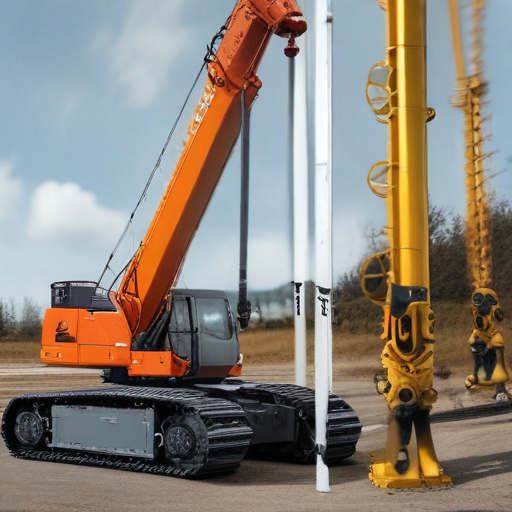
List Various Types of “mini crawler crane”
Mini crawler cranes are compact lifting machines designed for confined spaces and difficult-to-reach areas. They offer the versatility and maneuverability required for various construction, maintenance, and industrial applications. Here are some of the main types of mini crawler cranes:
1. Spider Cranes:
– Characterized by their spider-like legs, which can extend and stabilize on uneven surfaces.
– Ideal for indoor work, tight spaces, and rough terrains.
– Examples include UNIC URW and Maeda MC series.
2. Telescopic Boom Cranes:
– Feature extendable booms that can reach higher elevations.
– Offer flexibility with multiple boom sections.
– Models like the Jekko SPX series and TADANO’s compact cranes fall under this category.
3. Knuckle Boom Cranes:
– Equipped with articulated booms similar to an elbow joint, allowing for more precise positioning.
– Often used for tasks requiring intricate maneuvering and lifting.
– JF series from Jekko are well-known examples.
4. Hybrid Electric Cranes:
– Combine diesel engines with electric motors for eco-friendly operation.
– Suitable for environments with strict emission regulations.
– Variety includes Maeda’s MK series and UNIC’s ECO models.
5. Battery-Powered Cranes:
– Fully electric cranes that run on rechargeable batteries.
– Ideal for indoor or noise-sensitive areas due to low emissions and quiet operation.
– Examples include Jekko MPK series and Valla’s battery line-up.
6. Pick & Carry Cranes:
– Designed to transport loads over short distances.
– Lack outriggers, making them more mobile but requiring level surfaces.
– Valla and Maeda offer several models in this category.
Each type boasts unique features tailored to different tasks and environments, making mini crawler cranes essential in modern construction and logistical operations.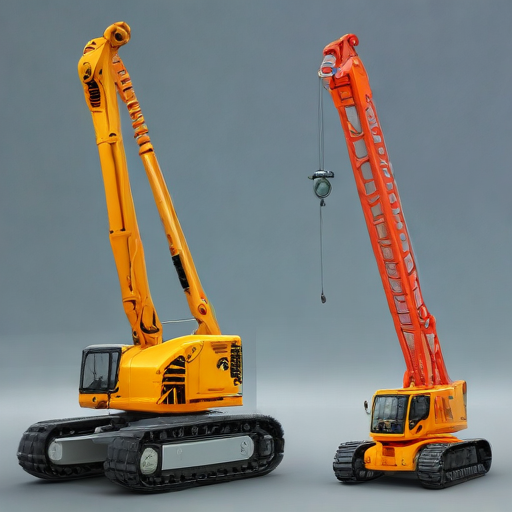
List Application of “mini crawler crane”
Mini crawler cranes, known for their compactness and versatility, are indispensable in various industrial and construction-related tasks. Below are some key applications of mini crawler cranes:
1. Construction Sites: Ideal for confined spaces, mini crawler cranes can navigate tight areas and perform lifting tasks that larger cranes cannot, such as interior construction projects, especially in urban settings.
2. Utility Work: They are perfect for utility installations and repairs, particularly where access is limited, like in underground spaces or amongst a dense network of pipes and cables.
3. Glass Installation: These cranes excel at handling and positioning glass panels in high-rise buildings due to their precision and ability to operate in restricted environments.
4. Maintenance and Repairs: Mini crawler cranes are heavily used for maintenance work in industrial plants and factories where space is restricted, needing precise and careful handling of heavy machinery parts.
5. Landscaping: In landscaping projects that involve heavy lifting, such as placing large stones or statues, mini crawler cranes provide the necessary lifting capabilities while minimizing site disruption.
6. Railway Construction and Maintenance: Their ability to maneuver in tight spaces makes them suitable for railway infrastructure projects, including the installation of tracks and maintenance of existing structures.
7. Maritime Applications: They are frequently used in shipyards and ports to lift heavy components like engines and cargo containers, benefiting from their mobility and lifting power.
8. Roofing Projects: Mini crawler cranes are often employed to lift roofing materials and structures in scenarios where conventional cranes cannot access.
9. Telecommunications and Energy: For setting up towers, antennas, or transformers in remote or difficult-to-access areas, mini crawler cranes provide the necessary lift and reach.
10. Event Setups: They are used in setting up stages, lighting rigs, and other infrastructure for events and exhibitions, due to their precise maneuvering and lifting capabilities in indoor and outdoor venues.
In summary, mini crawler cranes are versatile and essential across various sectors requiring compact, precise, and powerful lifting solutions.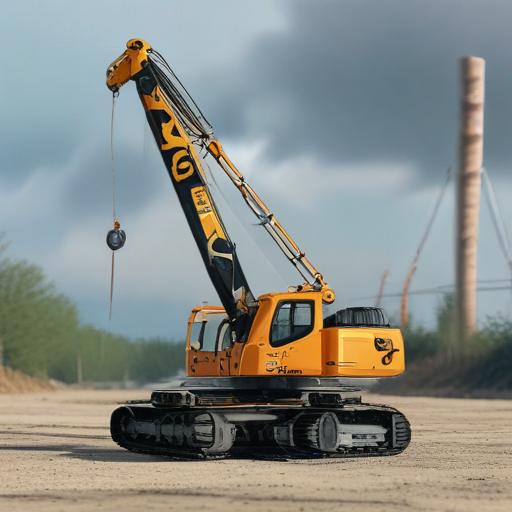
List Buyer Types of “mini crawler crane”
A “mini crawler crane” is a versatile piece of equipment used across a variety of industries and applications. Here are the typical buyer types for this machine:
1. Construction Companies: These firms commonly employ mini crawler cranes for tasks in confined or restricted areas, where larger cranes are impractical. They are instrumental in building construction, renovation projects, and infrastructure development.
2. Industrial Plants: Manufacturing facilities, refineries, and chemical plants use mini crawler cranes for maintenance, installation, and operational workflows. They are particularly useful for lifting heavy machinery and components in confined spaces.
3. Utility Companies: These organizations, which manage electrical, water, and telecommunication services, often use mini crawler cranes for maintenance and installation tasks in narrow or challenging locations such as urban environments or remote areas.
4. Event Management Firms: For setting up large-scale events, concerts, and exhibitions, these companies utilize mini crawler cranes to assemble stages, lighting rigs, and other large structures safely and efficiently.
5. Landscaping and Arborist Services: Tree removal companies and landscape services benefit from mini crawler cranes to lift and maneuver large trees and other heavy materials in tight spaces or delicate environments.
6. Marine and Port Operators: These operators use mini crawler cranes for loading, unloading, and moving heavy cargo in spaces where larger cranes cannot operate effectively.
7. Mining Operations: Within the mining sector, mini crawler cranes assist in the lifting and transportation of equipment and extracted materials within tight underground confines or rugged terrains.
8. Rental Companies: Equipment rental providers purchase mini crawler cranes to lease them to various industries needing short-term or project-specific lifting solutions.
These buyer types prioritize the compactness, maneuverability, and lifting capability of mini crawler cranes, making them crucial assets across diverse operational settings.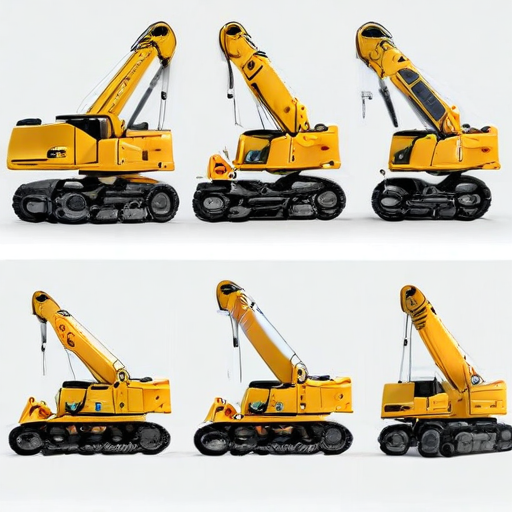
List “mini crawler crane” Project Types for Different Industries
Mini crawler cranes are versatile tools used across various industries for handling lifting and maneuvering tasks that require precision and flexibility in confined or complex environments. Here is a concise list of project types in different industries where these cranes shine:
Construction
– Interior Renovations: Ideal for lifting heavy materials inside buildings where bigger cranes can’t enter.
– High-Rise Buildings: Assists in lifting machinery and structural elements to upper floors without heavy scaffolding.
Infrastructure
– Bridge Repair: Accesses tight spaces like under bridges or near foundations.
– Rail Maintenance: Provides lifting solutions for installing or maintaining rail components in constrained rail corridors.
Energy
– Wind Turbines: Assists in the assembly and maintenance of wind turbines, particularly in harsh terrains.
– Solar Panel Installation: Facilitates the placement of solar panels on rooftops or solar farms efficiently.
Manufacturing
– Production Line Assembly: Useful for installing heavy equipment on production lines where factory space is limited.
– Machine Relocation: Moves and installs heavy machinery within manufacturing plants with precision.
Utilities
– Water Treatment Plants: Helps in installing and maintaining equipment in restricted areas.
– Power Stations: Lifts and places equipment in compact, often heavily-engineered spaces.
Transportation
– Aviation: Assists in airplane maintenance and parts replacement inside hangars.
– Marine: Useful for shipbuilding tasks and maintenance in tight shipyard environments.
Entertainment
– Event Setup: Facilitates the assembly of stages, lighting rigs, and temporary structures in confined venues.
– Theme Parks: Helps in maintaining and repairing rides without disturbing park operations.
Healthcare
– Hospital Construction: Deploys within healthcare buildings to assist in installations without major disruptions.
– Laboratory Settings: Precisely places sensitive and heavy equipment in confined lab spaces.
In summary, mini crawler cranes bring versatility, precision, and maneuverability, making them indispensable across diverse industries requiring complex spatial navigation and accurate lifting capabilities.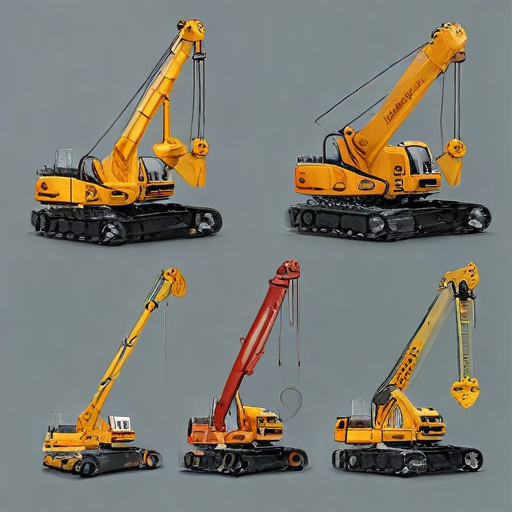
mini crawler crane Accessories Upgrades and Custom Manufacturing Options
Mini crawler cranes are versatile tools in various industries, from construction to maintenance. Enhancing their functionality and efficiency is possible through a broad range of accessories, upgrades, and custom manufacturing options. Below is a concise overview:
Accessories:
1. Jib Extensions: Increase the reach and flexibility, allowing operations in confined spaces.
2. Hook Blocks: Different capacities and configurations improve load handling.
3. Remote Controls: Enhances safety and precision by allowing operators to control the crane from a distance.
4. Load Indicators: Ensure safe lifting operations by monitoring weight and center of gravity.
5. Outrigger Mats: Provide stability on uneven or soft grounds.
Upgrades:
1. Power Options: Hybrid or electric powertrains reduce carbon footprint and increase operational efficiency.
2. Telematics Systems: Real-time monitoring and diagnostics enhance maintenance efficiency and reduce downtime.
3. Enhanced Safety Features: Anti-collision systems, proximity sensors, and advanced warning systems improve on-site safety.
4. Weatherproofing: Upgrades that protect the crane’s sensitive components from hostile environmental conditions.
Custom Manufacturing Options:
1. Tailored Dimensions: Modifications in crane size and structure to suit specific spatial constraints.
2. Specialized Attachments: Custom-designed tools such as vacuum lifters, augers, or specialized grabs for unique lifting requirements.
3. Rotating Platforms: Custom platforms for increased maneuverability in tight spaces.
4. Advanced Hydraulics: Enhanced precision and load handling through bespoke hydraulic systems.
5. Color Coding and Branding: Custom paint jobs and decals that align with company branding or operator identification.
Conclusion:
Optimizing your mini crawler crane with the right accessories, upgrades, and custom options not only maximizes efficiency but also ensures safer and more reliable operations. Investing in these enhancements tailors the equipment to specific needs, providing a competitive edge in your industry.
List Quality Control and The Manufacturing Process of “mini crawler crane”
Quality Control and Manufacturing Process of Mini Crawler Crane
Quality Control:
1. Raw Material Inspection:
– Ensure steel and other materials meet specifications.
– Use spectrometers, hardness testers, and tensile testing machines.
2. Supplier Quality Assurance:
– Audit and certify suppliers.
– Conduct regular reviews and inspections.
3. In-Process Quality Checks:
– Employ checkpoints at each production stage.
– Use tools like calipers, micrometers, and CMM machines.
4. Post-Assembly Testing:
– Perform load tests, stability assessments, and function checks.
– Use simulation software and physical tests.
5. Final Inspection:
– Conduct comprehensive inspections before shipping.
– Review documentation and verify compliance with industry standards.
6. Documentation and Traceability:
– Maintain records for all processes and inspections.
– Ensure traceability from raw material to finished product.
Manufacturing Process:
1. Design and Prototyping:
– Use CAD software for initial designs.
– Create prototypes via 3D printing or small-scale manufacturing.
2. Material Procurement:
– Source high-strength steel, hydraulic components, and electronics.
– Assess suppliers for quality and reliability.
3. Cutting and Shaping:
– Use CNC machines for precision cutting and forming.
– Employ laser cutting for complex shapes.
4. Welding and Assembly:
– Robotic and manual welding ensure strong joints.
– Assemble structural components in modular phases.
5. Machining and Finishing:
– Machine parts to exact dimensions.
– Apply anti-corrosive coatings and paint.
6. Hydraulics and Electrical Systems:
– Install hydraulic cylinders and pumps.
– Integrate electronic controls and sensors.
7. Load Testing and Calibration:
– Test cranes under simulated load conditions.
– Calibrate hydraulic and electronic systems for optimal performance.
8. Quality Assurance and Shipping:
– Perform final quality checks and adjustments.
– Package securely for transportation.
By integrating meticulous quality control and precision in each manufacturing phase, the production of mini crawler cranes ensures durability, safety, and operational excellence.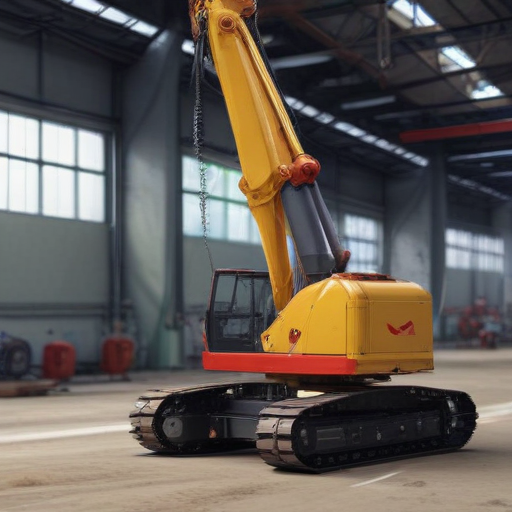
How to use “mini crawler crane”
Operating a mini crawler crane requires understanding its functions, safety protocols, and operational guidelines. Here’s a concise guide:
Pre-Operation
1. Inspection:
– Check the crane for any visible damage.
– Ensure fluid levels (oil, hydraulic fluid) are adequate.
– Verify that the load charts and manuals are present.
2. Site Preparation:
– Remove obstacles from the work area.
– Assess ground stability for crane placement.
– Use outrigger pads if necessary to distribute load.
Setup
1. Position the Crane:
– Navigate the crane to the designated spot using the control panel.
– Deploy the outriggers if available and stabilize the crane.
2. Boom Extension:
– Extend the boom slowly, monitoring both the load and the ground.
– Use the control panel to extend both length and angle.
Operation
1. Lifting:
– Attach the load to the hook using approved slings and attachments.
– Double-check the load’s weight against the crane’s capacity.
– Communicate with the signalman for coordinated lifts.
2. Lifting Motion:
– Lift the load slowly and smoothly.
– Avoid jerky movements to prevent swinging.
3. Movement:
– Use the crane’s control panel to move the load horizontally.
– Maintain a steady speed and constant visual on the load.
Post-Operation
1. Lowering the Load:
– Place the load gently at the designated location.
– Ensure it’s stable before detaching.
2. Shut Down:
– Retract the boom and outrigger if used.
– Turn off the crane and lock the control panel.
3. Final Inspection:
– Conduct a post-use inspection for any wear and tear.
Safety Tips
– Always wear appropriate PPE (Personal Protective Equipment).
– Stay within the crane’s load limits.
– Maintain communication with the ground crew.
By following these steps, you can efficiently and safely operate a mini crawler crane.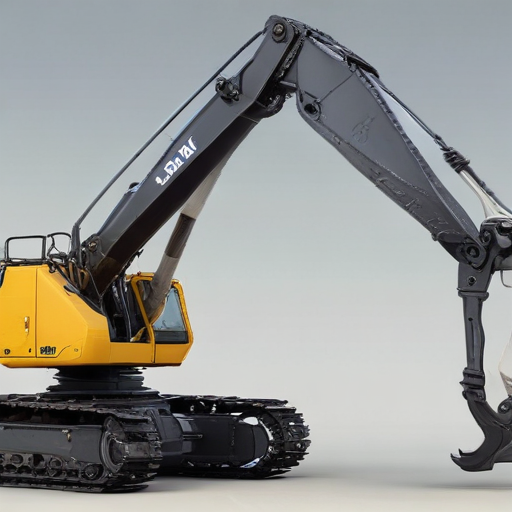
“mini crawler crane” Comparative Analysis
A mini crawler crane is a versatile, compact lifting device designed for operations in confined spaces where traditional cranes can’t operate. Here’s a comparative analysis based on key parameters:
1. Size and Mobility:
– *Strength*: Mini crawler cranes are highly maneuverable due to their compact size, making them ideal for tight spaces and indoor projects.
– *Weakness*: Their small footprint limits their lifting capacity compared to larger cranes.
2. Lifting Capacity:
– *Strength*: Despite their size, they offer impressive lifting capacities, typically ranging from 1 to 10 tons, providing sufficient capability for many specialized tasks.
– *Weakness*: They are not suitable for extremely heavy lifting projects that require large-scale cranes.
3. Stability and Terrain Adaptability:
– *Strength*: Mini crawler cranes excel on uneven or soft terrains, thanks to their tracked undercarriage providing enhanced stability.
– *Weakness*: On very rough or rocky terrains, their smaller tracks may struggle compared to larger, more robust cranes.
4. Versatility:
– *Strength*: They come with a variety of attachments and accessories enabling functions such as glazing, foundation work, and electrical installations.
– *Weakness*: Their specialization may mean less versatility in very large-scale, generalized construction projects.
5. Operational Efficiency:
– *Strength*: Quick set-up times and intuitive controls reduce downtime and enhance operational efficiency.
– *Weakness*: Limited by battery life or fuel capacity when operated for extended periods without access to charging or refueling stations.
6. Cost:
– *Strength*: Generally, mini crawler cranes are more cost-effective due to lower purchase and operational costs.
– *Weakness*: For large-scale operations requiring multiple units, costs can accumulate, potentially negating the initial saving.
In conclusion, mini crawler cranes are ideal for niche applications in confined spaces, providing a balance of lifting capacity, stability, and versatility. However, their limitations in capacity and terrain adaptability make them less suitable for large-scale, heavy-duty projects.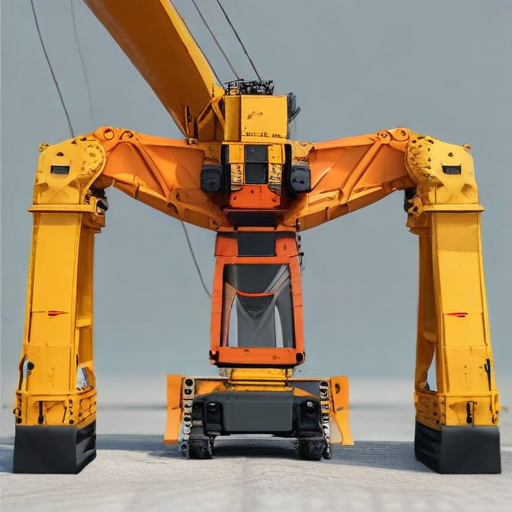
“mini crawler crane” Warranty and Support
When you invest in a mini crawler crane, ensuring that it comes with robust warranty and support is crucial for optimal performance and peace of mind. Most reputable manufacturers offer comprehensive warranty packages that cover various components of the crane. Typically, warranties span from one to three years and may include coverage for parts, labor, and potential service calls. It’s important to read the warranty terms carefully to understand what is and isn’t covered, as well as any requirements for maintenance that might affect warranty validity.
Support doesn’t end with the warranty, though. Strong aftermarket support is essential for long-term reliability and efficiency. Manufacturers usually provide multiple support channels, including phone, email, and online portals. Technical support is often available for troubleshooting, and many companies offer on-site service from trained technicians. Some manufacturers also provide remote diagnostics and software updates to help keep your equipment in peak condition.
Training is another critical aspect of support. Many companies offer training programs for operators and maintenance personnel to ensure safe and efficient crane operation. These programs can be conducted at the manufacturer’s facility or on-site, depending on your needs.
In addition to the standard support, you may have the option to purchase extended warranties or service contracts, which can provide added security beyond the initial coverage period. These plans often include regular maintenance visits and priority service for repairs, minimizing downtime and ensuring your mini crawler crane remains operational when you need it most.
Overall, paying attention to the warranty and support options can greatly enhance the lifecycle and ROI of your mini crawler crane. Always select a manufacturer with strong, reliable support and clear warranty terms to ensure smooth, trouble-free operation.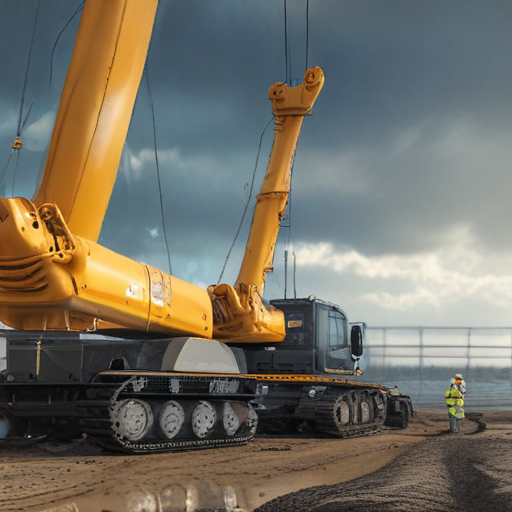
List “mini crawler crane” FAQ
Mini Crawler Crane FAQ
#### 1. What is a Mini Crawler Crane?
A mini crawler crane is a compact, versatile lifting machine designed for use in tight or hard-to-reach spaces. Equipped with crawler tracks, it offers stability and maneuverability on various terrains.
#### 2. What are the Key Features?
– Compact Size: Fits through narrow passages.
– Crawler Tracks: Ideal for rough and uneven surfaces.
– Remote Control: Enhances safety and precision.
– High Lifting Capacity: Despite its size, it can lift substantial loads.
#### 3. What Industries Use Mini Crawler Cranes?
– Construction
– Glazing
– Utilities
– Landscaping
– Manufacturing
#### 4. What are the Advantages?
– Versatility: Works indoors and outdoors.
– Reduced Ground Pressure: Suitable for delicate surfaces.
– High Maneuverability: Accesses confined spaces.
– Safety Features: Includes overload protection and stabilization systems.
#### 5. What are the Limitations?
– Limited Reach: Compared to larger cranes.
– Weight Restrictions: Cannot handle exceptionally heavy loads.
#### 6. How to Choose the Right Model?
Consider:
– Lifting Capacity: Required load weight.
– Dimensions: Space constraints.
– Reach and Height: Necessary lift reach.
– Terrain: Ground conditions at the site.
#### 7. Are They Easy to Transport?
Yes, mini crawler cranes are generally designed to be compact and lightweight, making them easy to transport via trailers or flatbed trucks.
#### 8. What Maintenance is Required?
Regular maintenance includes:
– Track and Undercarriage Inspection
– Hydraulic System Checks
– Safety System Tests
– General Lubrication and Cleaning
#### 9. Can They Handle Indoor Jobs?
Absolutely, their compact size and reduced emissions (in electric models) make them suitable for indoor tasks.
#### 10. Are They Environmentally Friendly?
Electric mini crawler cranes offer zero emissions and low noise, making them environmentally friendly and suitable for urban or closed environments.
#### Conclusion
Mini crawler cranes are versatile, compact, and powerful tools ideal for various lifting tasks in confined or challenging environments. Understanding their features, advantages, and limitations helps in selecting the right model for your needs.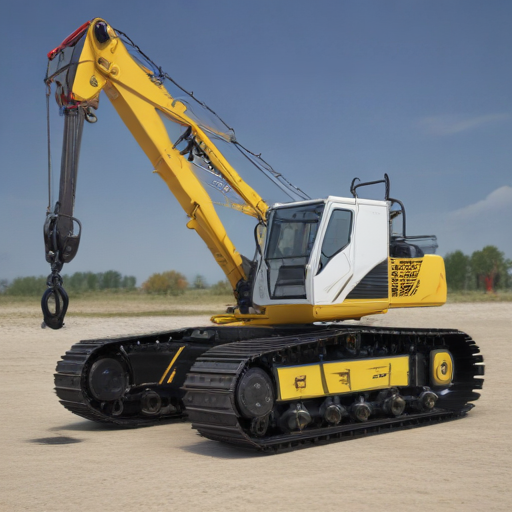
Top 10 FAQ with answer about mini crawler crane for Buyer Sourcing from China
Certainly! Here are the top 10 frequently asked questions (FAQs) about sourcing mini crawler cranes from China, along with concise answers:
1. What are mini crawler cranes used for?
Mini crawler cranes are compact cranes ideal for lifting and moving heavy loads in confined spaces or areas with restricted access. They are commonly used in construction, landscaping, and indoor projects.
2. What are the weight capacities of mini crawler cranes?
Mini crawler cranes typically have weight capacities ranging from 1 to 10 tons. Specific models may have higher or lower capacities based on their design and manufacturer.
3. How do I verify the quality of mini crawler cranes from Chinese manufacturers?
Check for certifications like ISO9001, CE, and other quality assurance accreditations. Request detailed product specifications, test reports, and conduct third-party inspections if necessary.
4. What are the lead times for manufacturing and shipping?
Lead times vary but generally range from 4 to 12 weeks depending on the order size and complexity. Shipping can take an additional 2 to 6 weeks based on the destination.
5. Can I customize the mini crawler cranes to fit my specific needs?
Yes, many Chinese manufacturers offer customization options. Discuss your requirements with the supplier to ensure they can accommodate your needs.
6. What are the payment terms?
Common payment terms include T/T (telegraphic transfer), L/C (letter of credit), and sometimes trade assurance services through platforms like Alibaba. Initial deposits typically range from 30% to 50%.
7. How are after-sales services and support handled?
Ensure the supplier provides a warranty period, typically 1 to 2 years, and inquire about the availability of spare parts, technical support, and service centers.
8. What about compliance with local regulations and standards?
Verify that the cranes meet your country’s regulatory requirements. Manufacturers should provide the necessary documentation and certification.
9. Are there language barriers when dealing with Chinese suppliers?
Major suppliers usually have English-speaking representatives. However, clear and concise communication, preferably in written form, is recommended to avoid misunderstandings.
10. How do shipping and logistics work?
Most suppliers can handle logistics, including sea freight, customs clearance, and delivery to your address. Ensure shipping terms (FOB, CIF, etc.) are clearly defined in the contract.
By addressing these FAQs, buyers can make informed decisions while sourcing mini crawler cranes from China efficiently.

